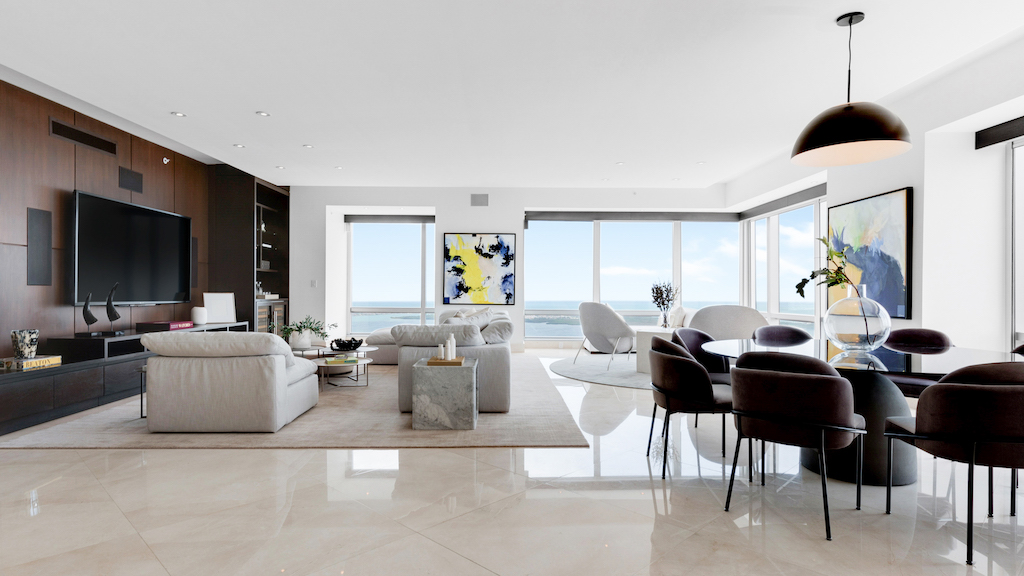The client looked into my eyes with an expression I had seen any number of times before – sort of a mixture of puzzlement and concern – almost bordering on complete dismay. What could have caused her such anxiety you wonder. No, it wasn’t my bill, but the realization that the custom furniture I had designed and installed in her husband’s executive office – the furniture she had only a short while ago so loved and praised - was not made of solid wood – but veneer! I then had to explain to her, as I’ve done numerous times before with clients, the pros and cons of using one or the other.
There are still too many of us that believe that solid wood is better than veneer when it comes to furniture. Today more than ever before this idea couldn’t be further from the truth. Veneers offer any number of advantages over solid woods and are the preferred materials of many of the finest furniture manufacturers. But nowadays furniture is most often a combination of solid woods and veneers as is the case with most of the pieces that I design and manufacture such as my client’s executive office.
The solid woods give much needed strength to edges, legs and aprons and other supporting components of a piece of furniture. No substitutes can compare to solid hardwoods when it comes to holding nails and screws and withstanding the stresses, loads, shocks and abrasions of daily use. Additionally, solid woods can usually be easily repaired and/or refinished.
But for areas such the sides of desks and entertainment centers where solid woods would likely crack and warp (which can often be the case when wood inherently expands and contracts due to fluctuations in humidity) a veneer is usually glued to the top and sides over a solid substrate such as plywood or MDF (medium density fiberboard). And this is a good thing as both of these materials are extremely strong and stable and bonded under high pressure for utmost durability and resistance to warping.
So just what is a wood veneer? Well, first and foremost it truly is real wood from real trees that have been finely sliced and then most often applied to the stable substrates just mentioned. Furniture makers use veneers because it allows them greater freedom with their designs than they could ever achieve working only with solid woods while at the same time making the finished piece more stable and even more cost effective to produce. They come from two basic sources of wood – trees that are available in solid stock as well as the exotic trees where solid stock is now almost impossible to find.
Veneers are the best way to achieve the craftsman’s vision of beauty for a piece of furniture and only the finest of the woods are saved to be veneers. The clever Egyptians knew this over 3500 years ago when the process was first used. Furniture covered with precious and exotic woods eventually became a highly prized art that called for artisans with great training and experience which holds true today; though with the advances in technology there really is very little chance for anything in the veneering process to actually go awry.
Yes, it’s been known for centuries that the only way to really achieve perfectly grain-matched and uniformly colored areas on a larger piece of furniture is to cut veneers from a single tree because as the saying goes, “no two trees are alike” is really true. To create the same effect with solid woods is far more difficult and costly. Exotic woods such as burls for example are comparatively small pieces and can be expanded into color and pattern-matched surfaces only by being sliced into veneers to create the necessary larger areas. This is often referred to as a “book-matched” pattern. (See illustrations.)
Add to the wisdom of using wood veneers the concept of sustainability and “green design” so much on peoples’ minds these days and you too will no longer question the merits of veneer versus solid woods. If we can be environmentally kind (producing over 42 surfaces of wood veneer for every 1 of solid wood – and with no wood even wasted as sawdust!) while at the same time creating something of lasting beauty, then we have indeed achieved a rare and perfect balance.
- Steve Wynn secures New York luxury penthouse
Visit Stephen Leon's Haute Design Network Profile for further info.








